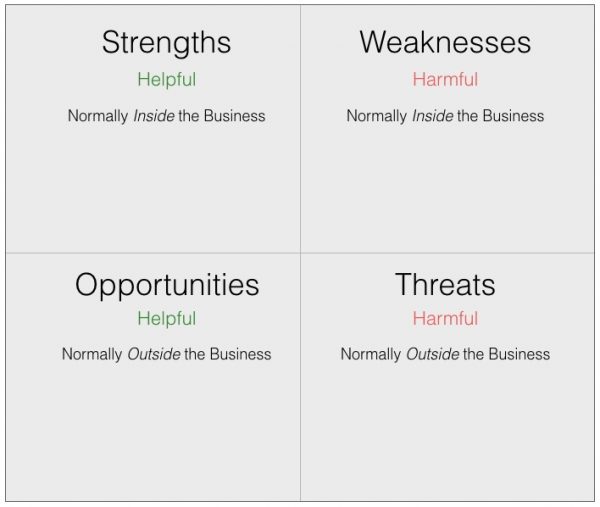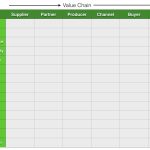SWOT Analysis A Grid to Log Strengths, Weaknesses, Opportunities, and Threats
SWOT Analysis: the initials stand for Strengths, Weaknesses, Opportunities and Threats and provides a simple, but effective means of considering potential decisions before you implement them.
SWOT Analysis is a tool you can do on computer, or on the back of a napkin. All you need is a two-by-two grid. It is as simple as what you see below. You can do it on your own or in a group. The results are often stronger when your work in a team. You can usefully use outsiders as well.
In any kind of planning process the SWOT analysis is a useful tool. You may see it in a business plan, a marketing plan, or a project plan.
It is even better if you use brainstorming to generate what you put in each box. If you use the benefits of team creativity you can do it either as a group in one place or use one of the many collaborative tools on the Web.
When working on your SWOT Analysis, you need to be looking for:
- ways to capitalize on each strength or make each one stronger;
- ideas to diminish each weakness, or even convert it into a strength;
- means to get benefit from each opportunity; and
- actions to mitigate each threat.
If you need to pull apart the factors and examine them in greater depth, then you can use the Fishbone or Cause and Effect diagram.
There are some simple rules for working on a SWOT Analysis:
- honesty not hopes
- data not dreams
- items can be on both sides
SWOT Analysis

SWOT Analysis Examples
Possible Strengths might be: patents; price/cost advantages; exclusivity; speed of new product development; known brand acquired.
Possible Opportunities might be: unrecognized space for innovation; additional markets; demographic change; new distributor.
Possible Weaknesses might be: shortage of cash for stock; unreliable supplies of raw material; inexperienced staff; low brand recognition; high cost structure; low margins; narrow range.
Possible Threats might be: no barriers to market entry for competitors; low cost imports; interest rates; new regulations;
This tool is deceptively simple, but often very revealing and can be used to lead on to describe your Critical Success Factors (CSFs).
Defining your CSFs will increase the focus of your work and you will be able to draw on them when you define your goals. Critical Success Factors are the ones that will make the difference between success and failure. If you want a little computer tool to help you, try one from Smart Draw.






